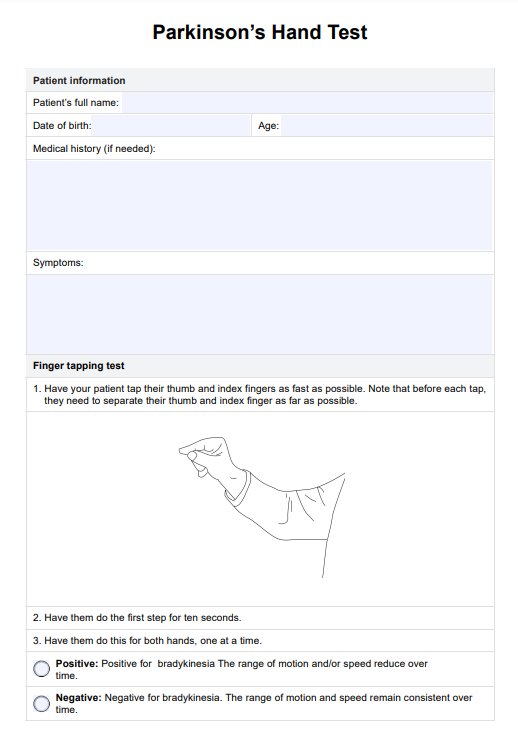They assess patients for any signs of Bradykinesia, which is a symptom of Parkinson's Disease. It can also evaluate other types of movement disorders.

Parkinson’s Hand Test
If your patient shows signs of Parkinson’s Disease, have them complete a series of hand tests to determine the likeliness of them having it before conducting other tests like a brain scan.
Parkinson’s Hand Test Template
Commonly asked questions
If you downloaded our template, you can store physical copies in your filing cabinet or within a folder on your computer. To be extra safe, you can store them with us by subscribing to our platform! Doing so essentially makes digital backups of your files, so if you lose your files on your computer or filing cabinet, you can re-download them and reprint them!
No. Please conduct other tests to check the rigidity of their limbs, their gait, balance, and if they have tremors. You must also conduct scanning tests as well later on.
EHR and practice management software
Get started for free
*No credit card required
Free
$0/usd
Unlimited clients
Telehealth
1GB of storage
Client portal text
Automated billing and online payments











